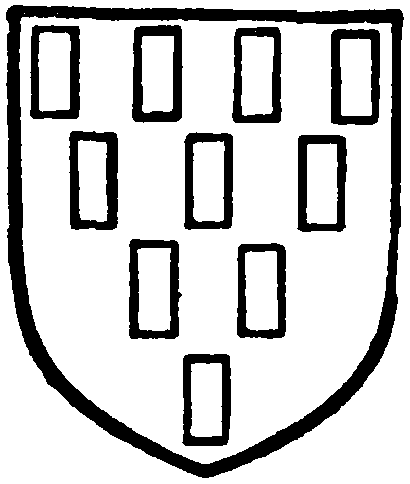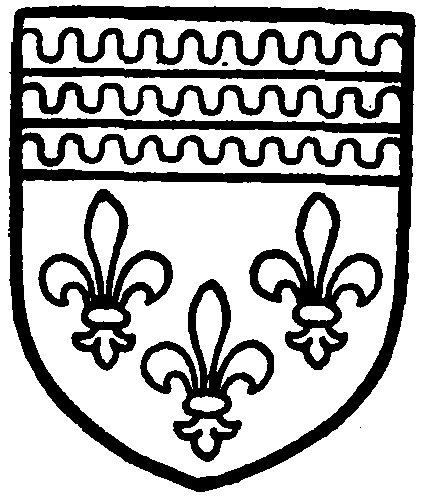A History of the County of Hampshire: Volume 4. Originally published by Victoria County History, London, 1911.
This free content was digitised by double rekeying. All rights reserved.
'Parishes: Baughurst', in A History of the County of Hampshire: Volume 4, ed. William Page (London, 1911), British History Online https://prod.british-history.ac.uk/vch/hants/vol4/pp275-277 [accessed 7 February 2025].
'Parishes: Baughurst', in A History of the County of Hampshire: Volume 4. Edited by William Page (London, 1911), British History Online, accessed February 7, 2025, https://prod.british-history.ac.uk/vch/hants/vol4/pp275-277.
"Parishes: Baughurst". A History of the County of Hampshire: Volume 4. Ed. William Page (London, 1911), British History Online. Web. 7 February 2025. https://prod.british-history.ac.uk/vch/hants/vol4/pp275-277.
In this section
BAUGHURST
Baggehurst, Bagehurst (xii cent.); Baghurst (xv cent.).
The parish of Baughurst on the northern borders of Hampshire consists of the village of Baughurst and the tithings of Inhurst and Ham. Inhurst occupies the northern part of the parish, where there is a quantity of woodland. The thickly-wooded common of Baughurst is in the extreme north, and other copses within the tithings are Great Baughurst Copse, Wigmore Copse, Heath Row Copse and Great Copse. The parish lies low and is liable to floods from the stream which runs northwards through the tithing of Ham. It is evident that this was a source of trouble in very early times, as in 1451 it is recorded that 'via equina et pedalis inter Foxcote et Baghurst supereffluitur per inundationem aquae supervenientis in defectu exaltationis ejusdem bis ad nocumentum patriae et transiuntium. (fn. 1) Near the eastern boundary of the parish is the village of Baughurst, north of which is Manor Farm, standing back from the road which runs north to Reading. Causeway Farm is close to the village, and there is a school which was built in 1843. Other places in the parish are Browning Hill, Pound Green and Town End. Baughurst House, near Pound Green, is the residence of Mr. John Singleton. Some place-names of interest are Rushmoore, le Netherparte, Fossattmeade (1693) and Causway (1661). (fn. 2)
The commons were inclosed in 1827. (fn. 3) The soil and subsoil are clay and the crops are the usual cereals. The total acreage is 1,797 acres, of which 684¾ acres are arable land, 618¼ acres permanent grass and 203¼ woods and plantations. (fn. 4) The Duke of Wellington is the principal landowner in the parish.
Manors
There is no definite mention of the manor of BAUGHURST in the Domesday Survey. However, it was probably granted to the church of Winchester as part of Hurstbourne Priors (q.v.) by King Alfred, and may possibly be represented in the survey by the unidentified holding of a certain William, '2 hides less I virgate' in Hurstbourne, since it was the duty of the tenants of Baughurst to make suit at the court of Hurstbourne until their suit was transferred to the manor and court of Manydown by 1462 (fn. 5) Thus Baughurst, as probably included in Hurstbourne, was held by the Bishop of Winchester for the support of the monks of Winchester, and it is mentioned by name as in his holding in 1259, (fn. 6) and again in 1316. (fn. 7) However, in the usual way the prior and convent were in full possession in the 14th century, and by the middle of the 15th century Baughurst had again lost its identity, being included 'in the prior and convent manor of Manydown.' (fn. 8) At the Dissolution the manor passed to the Dean and Chapter of Winchester in 1541, (fn. 9) was evidently included in the sale of Manydown Manor (q.v.) in 1649, and restored with it to the dean and chapter in 1660. Thus it is included in an account of the extent of Manydown Manor in a Chapter Book of 1686. (fn. 10) The Ecclesiastical Commissioners, as representatives of the dean and chapter, are now lords of the manor.
The earliest mention of the so-called manor of INHURST (Ineshurst, Isenhurst, Iwnest, xiii and xiv cent.) is, it seems, in 1298, when William de Kenne and Joan his wife, who held adjoining lands in Pamber (q.v. in Barton Stacey Hundred), alienated 13s. rent in Pamber, Ham and Inhurst to Roger de Coudray. (fn. 11) The Coudray family held directly of the king, and in 1316 the 'vill of Inhurst' was said to be held by the lord king, (fn. 12) while in 1428 Inhurst was said to contain less than ten inhabitants, domiciles, tenements, &c. (fn. 13) Obviously the early holding of the Coudrays in Inhurst was very small, but by the end of the 15th century it was reckoned, together with their holding in Pamber, as three messuages, two tofts and 20 acres of land, (fn. 14) which William More held of Morgan Kydwelly, knight, by service of 6s. 8d. yearly. Morgan Kydwelly held the inheritance of the Coudrays for life, in right of his wife Avice, the widow of William Coudray, and on his death in March 1506 it passed to Morgan Coudray, heir of William, aged sixteen. (fn. 15) Here the connexion between Pamber and Inhurst ceases, the 'manor of Pamber' passed to the Paulets, while Inhurst presumably continued in the Coudray family until sold, probably in the middle of the 16th century, to the Palmes family, who were busily acquiring lands at this date (see under Bentworth). In 1613 Sir Francis Palmes died seised of the manor of Inhurst,' but by what tenure he held it was not known; his son and heir, Sir Guy, was over thirty years of age at his father's death. (fn. 16) In 1691 John and Michael Acton owned the manor, (fn. 17) and in 1713 Fawler and Edward Meaton with their wives conveyed Inhurst to Marcellus Green. (fn. 18) Thomas Graham and others were concerned in a conveyance in 1789, when the manor passed to Stephen Maberly, (fn. 19) who was probably a trustee, as in the following year he with his wife Mary conveyed Inhurst to Charles Pole, (fn. 20) the owner of Wolverton, and from that date it has apparently followed the same descent as Wolverton (q.v.), the present owner being the Duke of Wellington.

Coudray. Sable ten billets or.
HAM was another reputed manor in Baughurst, and it appears to have followed the same descent as Inhurst (q.v. supra) from the earliest mention of it in 1298. (fn. 21) It is now represented by Ham Farm.
Church
The church of ST. STEPHEN is a modern building erected in 1845 on the site of an old structure said to be of 12th-century date. It consists of a chancel, north vestry, nave and a southwest tower, the lower stage of which forms the porch.

Palmes. Gules three fleurs de lis argent and a chief vair.
The building is of flint and stone in the 13th-century style. A few old stones are re-used, some rebuilt into the west doorway of the vestry, on one of which is a deeply incised cross, and in the west wall of the nave a blocked late 12th-century doorway is inserted.
The low chancel screen is of 15th-century date, with a modern upper beam and crest. It has solid lower panels, entirely plain, and four traceried openings above on either side of the square-headed central doorway. Some more tracery work of the same design and age is used in the quire seats on the north side of the chancel. The altar table is a small late 17th-century specimen.
The font is also of 15th-century date, and has an octagonal. bowl with quatrefoiled panels inclosing flowers. The stem is octagonal with a moulded base. The modern open roofs of nave and chancel are of very good design.
The tower has an octagonal upper stage and a stone spire, and its lower stage is vaulted; the stair is at the north-west angle.
On the west wall of the nave is a brass plate of 1674 reciting the charities given in that year by Thomas Sympson of Sherborne St. John.
The tower contains a ring of five bells, all cast by Thomas Swaine, 1775. The tenor is inscribed, 'Mr. Maberly did contrive to run three into five in 1775.'
The plate consists of a silver chalice and paten cover of 1569; a silver paten of 1780, the gift of William De Best, rector at that date; and a silver flagon of 1762 inscribed, 'The gift of John Dollery to the church at Baughurst in the year 1760' (sic).
The first book of registers contains baptisms from 1678 to 1801, marriages from 1678 to 1754 and burials from the same date to 1798. The second book has marriages only from 1754 to 1812, and the third has baptisms from 1805 to 1812 and burials from 1798 to 1812.
Advowson
Edward I confirmed John, Bishop of Winchester in possession of the advowson of the church of Baughurst in 1284, and the patronage of the living belongs to the bishopric at the present day. (fn. 22)
Dr. John Storey, LL.D., had some connexion with the church in the 16th century, since he is once mentioned (fn. 23) as presenting during Bishop Gardiner's tenure of the see (1531–55).
From very early days the church paid the hospital of St. Cross a pension of 5s., which is first referred to in a Papal Bull of 1187, and Baughurst is included in a royal charter of 1189, confirming the hospital in possession of several churches. (fn. 24)
'A certain pension' was deducted from the value of Baughurst Church in the 16th century, and the rector pays the pension at the present day. (fn. 25)
The Primitive Methodists and the Baptists have chapels in the parish.
Charities
In 1674 Thomas Sympson by his will charged his lands in the tithing of Inhurst with an annuity of £15 for the poor of six parishes, including Baughurst, to be laid out in the distribution of bread. The sum of 50s. for this parish is paid by Mr. Frederick Hunt, the owner of the property charged, consisting of 10 acres, known as 'Jack Higgs'' land.
The poor formerly received also an annuity of 10s. mentioned in the parliamentary returns of 1786 as the gift of Robert Green by will 1712, but which has ceased to be paid.
The National school, founded in 1843, is regulated by scheme of the Charity Commissioners of 1 November 1872.
In 1870 Charles Lamb, by deed, gave £100 consols, the dividends to be applied by the rector in providing four prizes of a religious kind to be awarded annually to boys in the parish school. The stock is held by the official trustees.
The official trustees hold a sum of £63 9s. 10d. India 3 per cent. stock, the dividends of which, amounting to £1 18s., are under a declaration of trust, dated 11 March 1897, applicable, under the title of 'The Baughurst Charity,' for the relief of deserving and necessitous poor.
